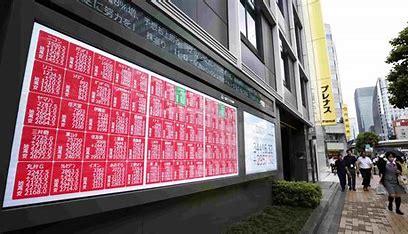Investment in frontier economies is prevalent with opportunities for very high returns but cannot be done without corresponding risks. These new economies, more modest in their size and less established compared to traditional emerging markets, entice investors seeking exposure to diversification and future growth. However, it is also essential to understand how complicated these markets are so that the right decisions can be made. This blog article will delve into the benefits and drawbacks of investing in frontier markets using practical experience and financial criteria.
What Are Frontier Markets?
Frontier markets are developing economies at an early stage of development. Examples include countries like Vietnam, Kenya, and Bangladesh. According to MSCI, these markets represent a combined maximum of 1% of world market capitalization. Their also small size and low liquidity make them different from developing economies e.g., Brazil or India.

The Pros of Investing in Frontier Markets
- High Growth Potential: Frontier markets often experience rapid economic growth. For example, GDP in Sub-Saharan Africa grew 3.6% in 2022 and outpaced pretty much all advanced economies, according to the World Bank. Fast rates of growth create business and investor opportunities.
- Diversification Benefits: Investing in frontier markets can diversify your portfolio. These markets are less correlated with developed economies. That is, they might prove effective even in difficult situations like decline in US/EU market. Such as during the 2008 global financial crisis, frontier markets appeared relatively stable in contrast to the developed world.
- Undervalued Opportunities: Frontier markets often feature undervalued assets. Lower valuations can provide higher returns for long-term investors. For instance, frontier market median Price-to-Earnings (P/E) ratio is in the range of 10-15, and in excess of 20 in developed markets.
- Demographic Dividends: Changing of generations and emerging middle class fuel demand in frontier markets. For example, in Vietnam the population of the "middle class" is expected to double to its size by 2030, for instance by the Boston Consulting Group, etc. Such trends fuel consumption and investment opportunities.
The Cons of Investing in Frontier Markets
- Political and Economic Instability: Frontier markets are typically riskier politically, such as the threat of unpredictable governments and regulatory upheaval. In 2021, political instability in Myanmar led to an 17.9% real decline in GDP. Such risks can severely impact investments.
- Limited Liquidity: Frontier markets have low trade volumes, and therefore buying or selling assets or setting up a spread in them can be highly challenging. For instance, average daily trading turnover in Kenya's stock exchange is less than 10 million USD, while more than billions of USD in the advanced markets.
- Currency Risks: Currency volatility is a major concern. For example, in 2022, the Sri Lankan rupee lost more than 40% purchasing power relative to the US dollar. Such fluctuations can erode investment returns.
- Poor Infrastructure: Underdeveloped infrastructure can hinder business operations and growth. Operational risk is endemic in frontier markets, given limited access to transport, technology and energy resources.
- Lack of Transparency: Frontier markets often lack regulatory frameworks and transparency. Such issues as corruption and bad corporate governance set roadblocks to due diligence. For instance, Transparency International ranked Zimbabwe 157th on the corruption perception index 2022 out of 180 countries.

Key Financial Metrics for Assessing Frontier Markets
Investors should evaluate financial indicators before entering frontier markets. Some key metrics include:
- GDP Growth Rates: Look for sustained growth above 3%.
- Inflation Rates: High inflation, above 10%, can erode purchasing power.
- Exchange Rate Stability: Assess currency trends over the past 5 years.
- Stock Market Liquidity: Measure average daily trading volume.
- Debt-to-GDP Ratios: Countries with ratios below 60% are generally safer.
Practical Strategies for Investing in Frontier Markets
- Use Exchange-Traded Funds (ETFs): ETFs give exposure to frontier markets without direct investment. Common ETFs are iShares MSCI Frontier 100 ETF (FM). These are funds and diversification and low risk than the funds focused on single stocks.
- Partner with Local Experts: Cooperation with local asset managers/investment banks can also be utilized to gather information about market trends and risk. Their experience helps them to navigate the regulatory landscape and to identify commercially viable solutions.
- Focus on Sectors with Growth Potential: Industries with high demand i.e., technology, agriculture, and consumer goods etc. For example, Nigerian tech industry grew by 8.5% in 2022 as per Statista report.
- Monitor Macroeconomic Indicators: Care for economic statistics such as GDP growth, inflation and foreign direct investment (FDI) inflows. These actions reflect the economic condition and the investment outlook on a given country.

Balancing Risks and Rewards
Investors should qualify high growth of frontier markets with their corresponding risks. Allocating 5-10% of the portfolio to these markets gives growth without getting too deeply invested. Diversification across multiple frontier markets reduces individual country risks.
Future Implications and Guidelines
Frontier markets are unique opportunities for high growth uses of diversifiers. However, these are accompanied by cost e.g. political instability, currency risk and lack of liquidity. Through learning these pros, cons and implementing practical investment techniques, you can make a rational decision. If appropriate the frontiers markets could be a profitable constituency of a diversified portfolio.

Consistent Investing: A Route to Sustainable Wealth

Beyond the Glass Ceiling: Strategic Wealth Management for Affluent Women

Understanding the Pros and Cons of Investing in Frontier Markets

Sniper’s Edge: Option Plays for Volatile Markets

Market Turmoil Escalates as Hedge Funds Stage Massive Sell-Offs for Survival

Investment Shifts in the AI Revolution

Global Inflation Trends: Why Certain Economies Are More Affected Than Others
